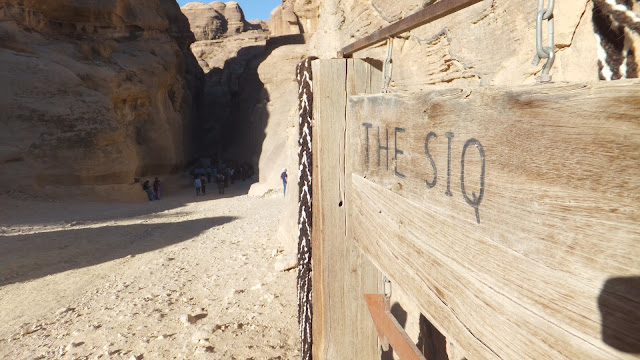The Nabateans, who were an nomadic tribe and organised traders used their wealth and skills to build the city of Petra in the 6th century BC. Later on, the Romans arrived and assumed control over Petra adding some Roman features such a colonnaded street and baths. In 363 and 551, earthquakes destroyed much of the city and Petra became a forgotten place, only known to local bedouin tribes who preferred to keep it a secret. Until 1812 when a Swiss explorer, Jean Louis Burckhardt, ended Petra's isolation. He disguised himself as a local Muslim holy man and discovered the lost and ancient city of Petra. Since then, it has become a focus of Western European obsession and has seen numerous archaeologists, travellers, poets and artists.
We completely underestimated the size of this place. It is HUGE! When you think of Petra, the first image is of the Treasury, the famous structure built into the wall that was the scene of Indiana Jones and his dad riding on horses in search of the Holy Grail! However, that is not the only gem to see in this city. You could walk for days and only see half of the place.
I have so many pictures of Petra and they are all so beautiful that is very hard to chose which ones to share on the blog.
I'll start with the Siq. An ancient corridor that snakes its way toward to the Treasury. It is a geological master piece. The Siq resembles a canyon, but is has been formed by tectonic forces that has ripped the rock.







Great to see the photos! It amazes me how much the canyons and rock look like Southern Utah.
ReplyDelete